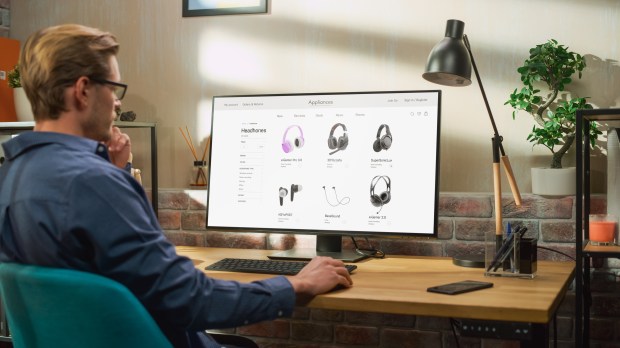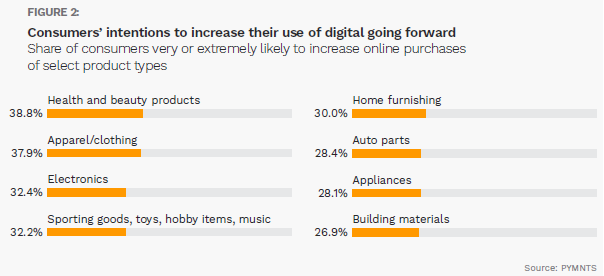Electronics and Clothing Among Top Categories Driving Online Retail Shift

The retail industry is experiencing a significant transformation as digital channels become increasingly influential in driving sales.
In “Digital Payments Takeover: Catching the Coming eCommerce Wave,” PYMNTS leverages insights from a survey of nearly 2,700 U.S. consumers to learn more about how their demand for digital grocery and retail shopping options is growing with time — and how that growth is driving a corresponding demand for digital native payment options to power their connected shopping journeys.
One of the key findings from the joint PYMNTS-AWS study is the potential decline in the share of in-store retail spending, as nearly one-third of consumers express their intention to rely more on digital channels.
In fact, more than one-quarter of non-grocery retail purchases already occur online, and a significant 30% of consumers indicate their likelihood to increase their online shopping for retail items in the coming year.
The growth of retail eCommerce activity is expected to be particularly significant in certain categories, such as health and beauty and clothing purchases. Per the study, nearly 39% of consumers express a high likelihood of increasing their online purchases of health and beauty products in the next year.
Similarly, 38% of shoppers intend to increase their use of digital channels going forward for apparel and clothing, further underscoring the shift in consumer purchasing behavior for these specific categories.

Online spending is also projected to grow in other categories, with 32% of consumers extremely likely to increase online purchases for electronics as well as products around sporting goods, toys, hobby items and music. Another 30% said interest in digital channels will drive an increasing share of purchases in the home furnishings segment.
Notably, consumers who purchase retail items online tend to spend an average of $42 more per purchase compared to those who buy in-store, representing a significant 48% increase.
Moreover, comparing the average amount of money spent per retail purchase online ($129) and in-store ($87) further demonstrates the potential for increased revenue and profitability through digital channels.

